Opportunity Zones:
Ultimate Guide & My Personal Experience
-
AUTHOR
James Hickman -
LAST UPDATED
February 20, 2021
A brand-new program was buried inside President Trump’s 2018 tax reform legislation – Opportunity Zones.
For those of you sitting on unrealized capital gains – think stocks, real estate, art, and even cryptos – it offers amazing tax benefits.
Through the program, you can sell your appreciated assets, defer capital gains tax, and invest the proceeds into one of 9,000 designated distressed communities across America called Opportunity Zones.
Most of Detroit and Baltimore is an Opportunity Zone… and even parts of Manhattan.
Your investment in real estate, an existing business, a new business, etc. located in an Opportunity Zone can grow completely tax-free for decades.
The program is still new, but it is already a huge success with billions of dollars pouring into America’s distressed communities.
And the conditions of the program are so good that I started my own Opportunity Zone fund here in Puerto Rico.
In this article, I’ll share my personal experience, explain how opportunity zones work and provide a detailed guide on how to take advantage of them.
In this In-Depth Article...
Download our free Interactive Opportunity Zones Calculator
Download our free Interactive Opportunity Zones Calculator
And calculate the potential tax savings for your PERSONAL situation.
Our free Excel Opportunity Zones Calculator allows you to enter details about your personal situation, current gains and prospective investments to see a performance comparison.
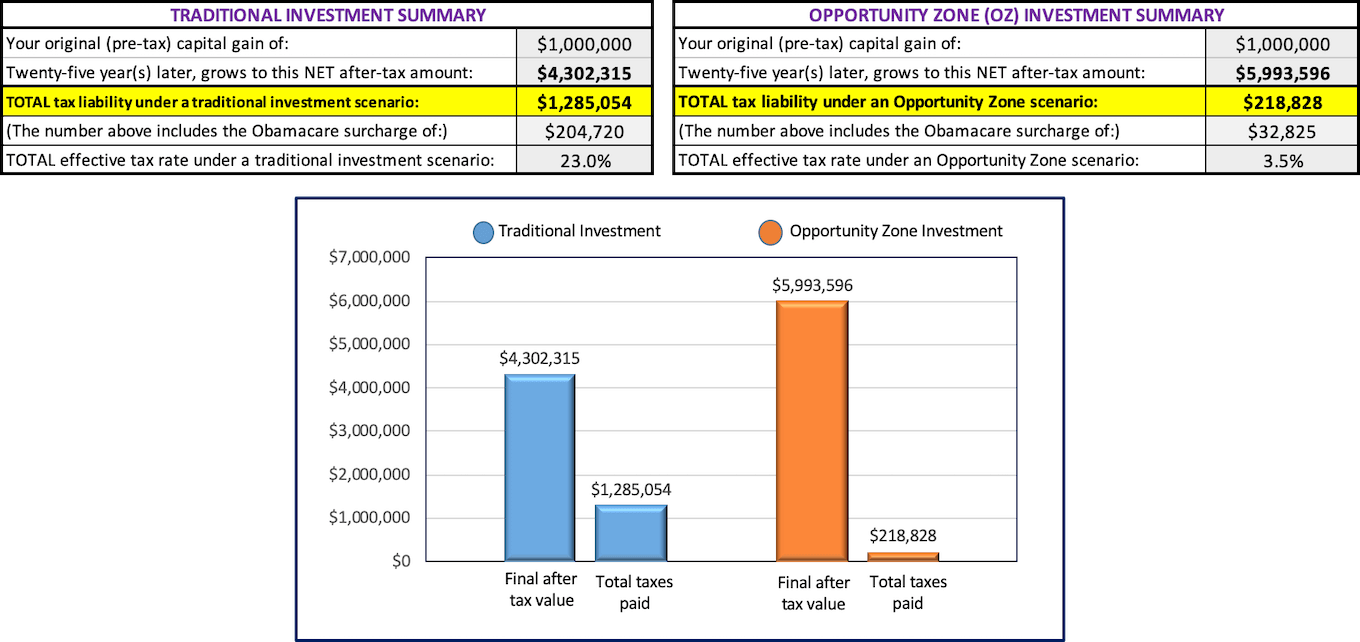
This calculator will show you…
This sheet could save you hours trying to figure out if an investment in opportunity zones is right for you.
Opportunity Zones program was buried inside President Trump’s 2018 tax reform legislation.
If you are sitting on unrealized capital gains – stocks, real estate, art, cryptos… – it offers amazing tax benefits.
Through the program, you can sell your appreciated assets, defer capital gains tax, and invest the proceeds into one of 9,000 designated distressed communities across America.
The program was created, because every American city has its good and bad areas.
Some neighborhoods are extremely wealthy and successful. Others may look like they are located in developing countries, far removed from the clean streets and high-income areas often associated with the United States.
These disparity patterns even exist in New York, Los Angeles and San Francisco – one of America’s wealthiest cities and top investment destinations.
Over the last 25 years, the US federal government attempted to solve the disparity problem by enacting various programs to incentivize distressed area investments.
These programs were heavily regulated and had a myriad of conditions attached. And at best, their results have been mixed.
But with the 2017 Tax Cuts and Jobs Act (Trump’s tax reform legislation), the Opportunity Zones came to life – a program that is much simpler than any of its predecessors. It is so simple, that it actually has a high chance of success.
The program gives investors the option to sell their appreciated assets and invest the capital gains in one (or more) Opportunity Zones across the country.
Considering America’s current “everything bubble” – stocks, bonds, real estate, etc. – caused by relentless Federal Reserve money printing, the program’s timing could be perfect.
Every state and territory in the United States is home to multiple Opportunity Zones. And every major city has at least one. For example, most of Detroit is an Opportunity Zone… as are large chunks of Baltimore… and even parts of Manhattan.
Important: Again, only your realized US capital gains are eligible for tax benefits. To qualify, you need to sell your appreciated assets and invest the realized capital gains into one or more designated Opportunity Zones. You can invest as little as one dollar… or as much as you want.
Technically, you can invest money from any source into Opportunity Zones – not just capital gains – but only capital gains from previous investments are eligible for the tax incentives. Still, you might consider investing money other than capital gains to “ride the wave”. More on that below.
Any appreciated asset that triggers capital gains taxes upon its sale should qualify. That means that the program will work not only for Americans but also for foreigners with US capital gains tax obligations. Also, investors – US or foreign – don’t have to be individuals. They can also be corporations, partnerships, trusts or estates.
After selling your appreciated asset, you have 180 days to move your capital gains into a so-called Opportunity Fund – the vehicle you will use to invest the money in an Opportunity Zone.
In some cases, the 180-day countdown can start later than the day of the asset’s sale. We will cover this exception later.
Despite what the name suggests, an Opportunity Zone Fund is not some sort of complicated hedge fund. It’s just a corporation or partnership that you can form yourself. The fund will not require official IRS approval. There is just a single, self-certifying form to file (which we cover below).
You will need to discuss with your tax advisor what entity is best for your tax situation, as you have the option to form a C corporation, S corporation or a partnership. The best choice for you will depend on the business you plan to engage in, your filing status and household’s total income, whether you will co-invest with other people, and other factors.
Opportunity Fund ownership is liberal – an individual, a small number of partners, or a large pool of investors operating through a professional fund manager can own a fund.
An Opportunity Fund can invest in just about any real estate or business located in a designated Opportunity Zone.
To participate in the program, you must sell your appreciated assets no later than Dec 31, 2026, and invest the proceeds in an Opportunity Zone within the following 180 days.
The program is set to expire on December 31, 2047, so you can count on at least two and a half decades of tax-free growth.
In early 2018, every US Governor designated certain communities as Opportunity Zones in his or her state.
(Click here to scroll up and see the interactive map.)
Besides merely looking at poverty rates, the federal government’s additional instruction to governors was to identify areas with:
Also, some areas that were NOT low-income could still be elected as Opportunity Zones if they were adjacent to low-income ones (limited to 5% of all Opportunity Zones selected by a state). The logic is that the development of such communities can provide jobs to people living in adjacent, low-income communities.
By June 2018, all 50 states, five territories, and Washington, DC had designated their Opportunity Zones. This selection will remain unchanged until December 31, 2028.
Currently, there are 8,762 Opportunity Zones that cover about 12% of America’s land mass. They are home to approximately 35 million people with an average poverty rate of 32%.
The zones encompass a mix of metropolitan, suburbs, and rural parts of the country.
Every large city has at least one Opportunity Zone.
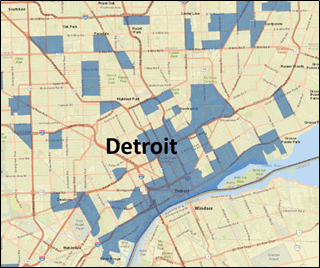
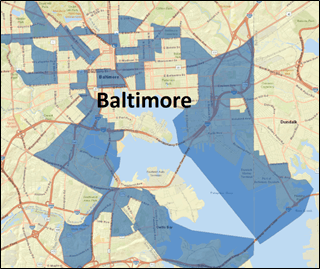
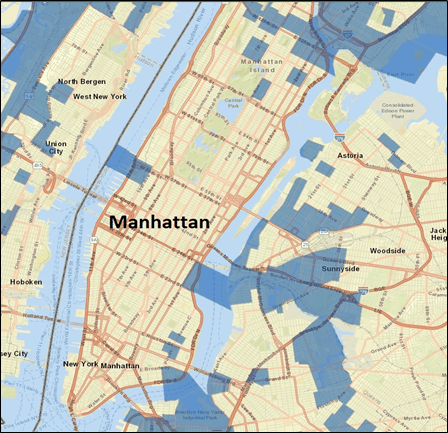
And because of a decade-long recession and Hurricane Maria’s devastation, almost the entire territory of Puerto Rico is now an Opportunity Zone.
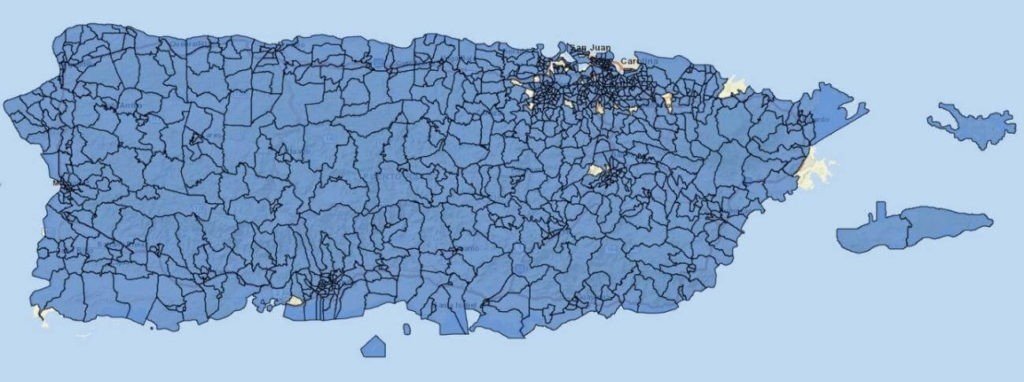
Here is the list of all Opportunity Zones.
You can also use this impressive interactive tool put together by Enterprise Community Partners – a nonprofit organization building affordable housing in low-income areas. Besides the map, it provides heaps of statistical data on each zone. To access the statistics report, click on the zone you like, and in the pop-up click the “Open Tract Opportunity360 Report.”
There is another excellent way Americans can slash their taxes LEGALLY.
Over the years Puerto Rico has enacted some of the most amazing tax incentives. If you can do your work from Puerto Rico, the famous Act 20 can slash your business taxation to just 4%… and with Act 22 you personally can pay NO tax on most capital gains (such as on stocks, bonds), and certain dividends, royalties, etc.
I am taking advantage of this myself and recently moved to Puerto Rico.
Click here to read our in-depth article on Puerto Rico’s tax incentives.
Also, many states and cities are taking a proactive approach. They’re offering tours of the most alluring opportunities in their territories to potential investors. Many already set up dedicated websites.
Here are the websites set up by Alabama and Louisiana, for example, that aim to educate investors about opportunities in their states. Most states and many cities have similar resources.
And now the exciting part – tax breaks.
How do you like this article?
Click one of the stars to add your vote...
Other readers gave this article an average rating of 5 stars.
You can obtain three lucrative tax benefits by investing in Opportunity Zones…
Potential benefits grow with time – the longer you hold your Opportunity Zone investment, the greater your tax benefits.
Your tax benefits start from day one, grow over time, and after ten years reach its maximum.
Here are the three main benefits associated with the Opportunity Zones program:
After selling your appreciated asset, you won’t pay capital gains tax until December 31, 2026, or until you sell your new Opportunity Zone investment (whichever comes first).
For example, if you sell your appreciated asset – and invest the proceeds in an Opportunity Zone that you will hold indefinitely – then you will delay paying capital gains taxes on the sold asset until Dec 31, 2026. (You’ll declare the capital gains in your 2026 tax return and actually pay the capital gains tax by April 15, 2027.)
And if you sell your Opportunity Zone investment, say, in 2021, then you will need to declare the asset’s original capital gains in your 2021 tax return and pay by April 15, 2022.
Important
You will be paying taxes on the original capital gain according to the rates that will be effective at the time. It’s possible that tax rates on long-term capital gains could be higher than today’s 23.8% maximum rate.
Also, you might want to set aside some cash (or liquidate a portion of your Opportunity Fund interest) to pay the original capital gain tax liability in the future.
If you hold your Opportunity Zone investment for five years, the taxable amount of your original capital gain decreases by 10%.
Let’s say you realized a capital gain of $200,000 and invested it in an Opportunity Zone. If you hold your Opportunity Zone investment for five years, then the taxable portion of your initial capital gain will decrease to $180,000 (10% discount).
And if you hold the Opportunity Zone investment for seven years or longer, the taxable amount of your original capital gain decreases by 15%.
Important
If you invest into an Opportunity Zone after Dec 31, 2019, you’ll only be eligible for the 10% discount.
That’s because the deadline for the five and seven year holding period is due by the end of 2026. So if you invest in 2020 or later, you can’t hold it for seven years by the end of the deadline.
In this article, we will only be mentioning the 10% discount, which you can still obtain if you invest in an Opportunity Fund before the end of 2021.
And finally, if you hold your Opportunity Zone investment for ten years or more, you will pay NO capital gains tax on any appreciation of your Opportunity Zone investment.
Say that your $200,000 investment turns into $500,000. If you’ve held the investment for ten years, you pay ZERO tax on the appreciation ($300,000).
That’s a very compelling combination of tax breaks.
To better show you the available benefits, in the table below we break down the benefits by investment duration:
| Opportunity Zone Investment Duration | Benefits you receive |
| Less than 5 years | If you hold your investment in the Opportunity Zone for less than five years: Benefit 1. Your original capital gains tax obligation is deferred until the date you sell your Opportunity Zone investment or until December 31, 2026 (whichever comes first). |
| 5-9 Years | Once you cross the five-year mark, you also secure a 10% discount on your original capital gains tax obligation: Benefit 1. Your original capital gains tax obligation is deferred until the date you sell your Opportunity Zone investment or until December 31, 2026 (whichever comes first). Benefit 2. You ensure a 10% discount on the original capital gain tax obligation. |
| 10 years or more | And finally, if you hold your Opportunity Zone investment for over ten years, you won’t pay any tax on your Opportunity Zone investment appreciation: Benefit 1. Your original capital gains tax obligation is deferred until December 31, 2026. Benefit 2. You ensure a 10% discount on the original capital gain tax obligation. Benefit 3. You pay NO capital gains tax on your appreciated Opportunity Zone investment. |
As you can see from the table above, you’ll maximize your tax benefits if you hold an Opportunity Zone investment for at least ten years:
First, any capital appreciation of your Opportunity Fund investment becomes 100% tax-free.
Second, while you still pay taxes on the original capital gain, the taxable amount is reduced by 10%. (The legislation provided for a 15% discount as well, but as of 2020, you can only obtain a 10% discount.)
And third, the payment of your original capital gains tax is deferred until the end of 2026.
Here is a timeline of potential benefits, assuming that you invest in 2020:
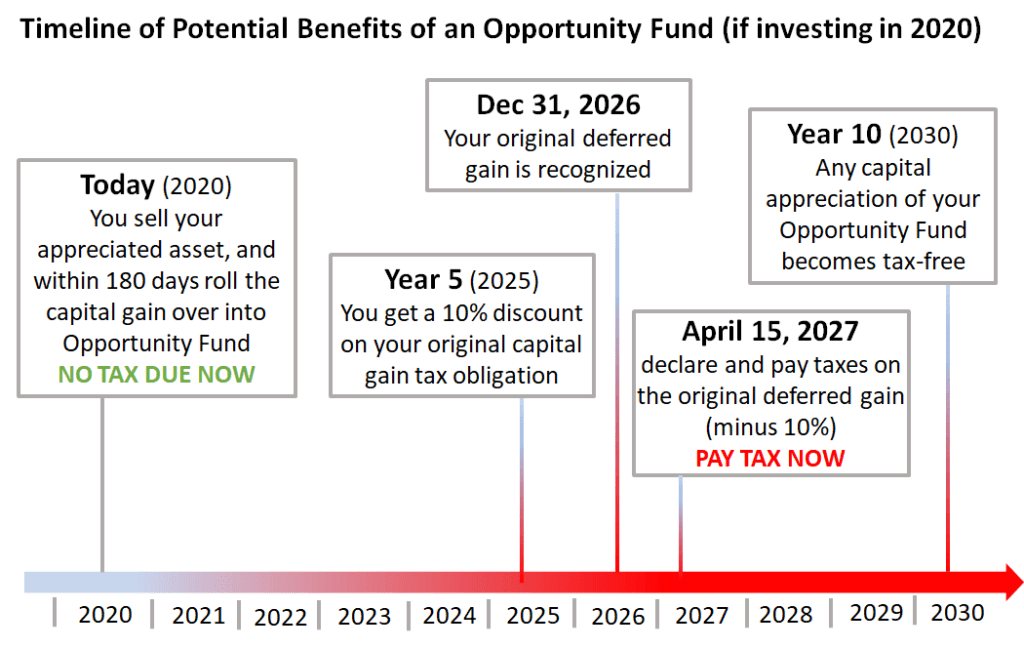
We have created a free Excel Opportunity Zones Calculator that shows you the potential tax savings for your PERSONAL situation.
This excel sheet allows you to enter details about your personal situation, current gains and prospective investments to see a performance comparison.

The calculator will show you…
This sheet could save you hours trying to figure out if an investment in opportunity zones is right for you.
When I originally examined the program, which was only six pages long, I immediately realized it could be the most impactful six pages of Trump’s entire tax reform legislation.
I closely followed the legislation and its developments.
Soon, with the right professional help, I formed my own Opportunity Zone Fund, which was easy to do. (The government’s minimal involvement in the process is refreshing.)
I didn’t have to wait too long for the right opportunity to come.
I invest in businesses all over the world, but one of the companies we considered investing in was based in the United States. And it fit the bill perfectly, except… it was not located in an Opportunity Zone.
I convinced the company’s CEO (which was not hard to do, as it’s a small startup) to move their office to an Opportunity Zone located just two miles away from where the management lives.
And since it was a new company formed in the Opportunity Zone, it qualified under the “original use” rule we discuss further down.
I could then invest in the company through my Opportunity Zone Fund.
Hint for those of you running businesses and looking for a new capital…
Moving your existing business into an Opportunity Zone, or starting a brand new one there, will open a whole new pool of capital waiting to be deployed.
I see first hand that the program works. The company I invested in rented an office in the Opportunity Zone. It will pay local taxes. The company’s employees eat lunch in local restaurants, and they shop in local stores.
In the future, as the company expands, they will hire more people, and some of them will probably be from nearby in the Opportunity Zone.
All that will benefit the community even more.
And if one day business takes off and the company is worth $1 billion, all that appreciation will be 100% tax-free.
Opportunity Zones are not limited to small segments of US cities, either. It’s quite possible that a large area is part of an Opportunity Zone.
Take Puerto Rico, for example, where I spend a lot of time. Almost the entire island is an Opportunity Zone, and many communities are in dire need of investment after the hurricane. The island is full of opportunities, especially in real estate.
Real estate-related OZ investments have the most traction.
For investors and real estate developers, Opportunity Zones offer cheap real estate and an unlimited, untaxed upside if a neighborhood takes off.
I am on the constant lookout for a great real estate deal that I could fold into my Opportunity Zone Fund.
Why Opportunity Zones are amazing for investors’ discipline
The benefits timeline implies that investment horizons should last an entire decade or more. And this is good news – This forces investors to think long-term, plan ahead, commit serious money, and stick to the cause.
That clearly helps the neighborhoods, but it also helps investors well beyond their tax benefits. In investing, a long-term view is critical.
Warren Buffett didn’t become wealthy by jumping among investments every few months. He picked his battles carefully, planned ahead, and stuck to his beliefs.
This legislation forces investors to do the same.
Opportunity Zones are NOT the only way to dramatically slash your taxes...
Download our free Perfect Plan B Guide and learn no-brainer strategies on how to legally reduce your taxes including…
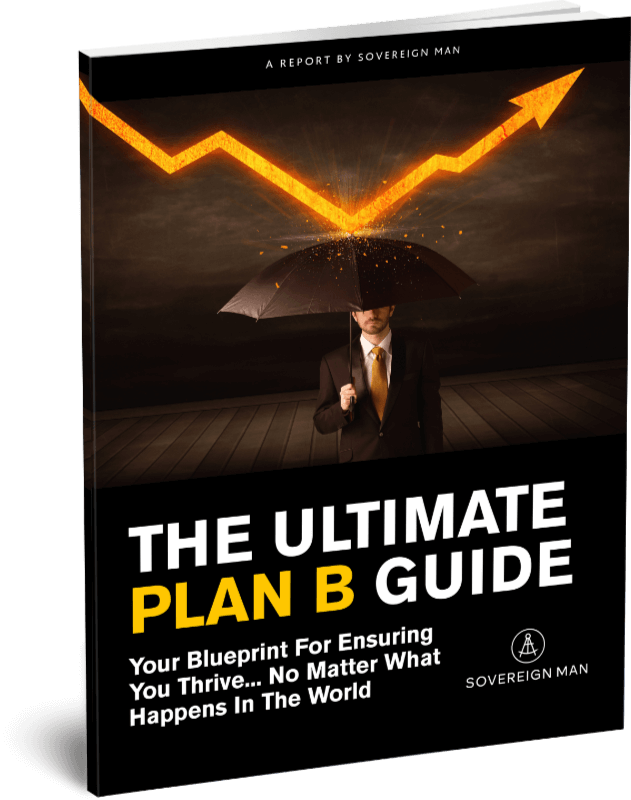
How Business Owners and Self-Employed Professionals can legally slash their tax bills up to 1.2 million each year.
With minimal changes to their business AND without moving abroad
You’ll also learn many other useful strategies such as how to generate strong investment returns while taking minimal risk, and how to obtain a valuable second passport.
Here are the six steps to take advantage of this opportunity...
The main advantage of the Opportunity Zones program over previous (mostly failed) programs is its simplicity.
After creating the initial framework and picking eligible zones, the government has put itself largely out of the picture. (That said, potential new legislation might mandate additional reporting and restrictions.)
Another advantage is that although your money moves to an Opportunity Zone, you yourself don’t have to; you won’t need to work or run an active business in a distressed area.
All you need to do is to sell your appreciated assets. Then, within 180 days, roll any realized gains into an Opportunity Fund that you (or somebody else) have established.
As mentioned earlier, in some cases, the 180-day countdown can start later than the day of the asset’s sale.
For example, if it’s your partnership or corporation that realizes the gain, but does not invest in an Opportunity Zone itself, and then passes down the gain to you – the individual partner or shareholder – then you can choose to start the 180-day countdown:
So, if you sell in January of 2020, in the first case you will have almost nine months to act, and in the second case – as much as a year and a half.
The rules of Opportunity Zones are very simple.
Yet, you don’t want to make a mistake that will lead to a loss of the benefits in the future. We recommend you consult with an experienced tax professional. If you don’t have one, Sovereign Confidential subscribers have access to our Rolodex of professionals who can help.
Here is how to take advantage of this opportunity:
Any appreciated asset qualifies: all types of real estate, stocks or bonds, precious metals, your vintage 1961 Ferrari, a piece of artwork, cryptocurrencies, etc.
Basically, if the asset’s sale triggers a capital gains tax to the IRS, then it qualifies.
Example: Let’s use equities as an example. A few years ago, you bought $20,000 worth of Apple stock. Shares soared, and now your holdings are worth $220,000 (a $200,000 appreciation). You sell your stock for $220,000 today and realize a $200,000 capital gain.
First, you need to show the government what portion of your capital gains you are planning to invest in an Opportunity Fund. If you skip this step, you will obtain no tax benefits.
First, on your next annual tax return, you report the sale of the appreciated asset itself, just like you would do even if you weren’t investing in Opportunity Zones.
In the case of stocks, you do this on Form 8949 (Sales and Other Dispositions of Capital Assets), and depending on the type of the asset, on Schedule D (Form 1040). (Your accountant should know the reporting requirements well.)
And second, you need to use Form 8949 again, but this time to defer the taxation of your capital gain amount.
It means you file Form 8949 twice on the same tax return.
(We discuss in detail how to fill Form 8949 further in this report.)
In return, you receive an interest in this fund.
You pay no capital gains tax on your Apple stock this year. You defer your tax obligation on the appreciated asset until the end of 2026, or until you sell your interest in the Opportunity Fund, whichever happens earlier.
(You can also start your own Opportunity Fund. We will explain how to do this further down in this report).
Example, continued: You invest your capital gain of $200,000 from the sale of the Apple stock into an Opportunity Fund.
If you decide to invest the entire $220,000 into the Opportunity Fund, you can do that, but keep in mind that the original basis of $20,000 will NOT qualify for future tax breaks
Only capital gains qualify for the tax breaks we’ve discussed.
So, if you invest $10 in an Opportunity Fund, but only $7 represents gains from a prior investment, then only 70% of your equity investment will be eligible for the capital gains exclusion.
If you want to invest the principal amount alongside the gain, you can do that, too, but this portion will not be eligible for the program’s tax benefits.
And if you don’t have any unrealized capital gains, but you still want to invest in a compelling Opportunity Zone investment, you can do so with any cash you have on hand. In this case, it will work as a traditional investment, with all applicable taxation.
It can invest either directly or through a subsidiary partnership or corporation.
Example, continued: The Opportunity Fund purchases an apartment building located in Detroit.
And since, by now, you have held the Opportunity Zone investment for over five years, you also can claim the 10% tax reduction on the taxable amount of your original capital gain.
Example, continued: In April 2027, you pay a capital gains tax on $180,000 ($200,000 of the original capital gain minus 10%) from the sale of the Apple stock several years ago.
And it doesn’t matter how much the the Opportunity Fund appreciated.
Technically speaking, after ten years, your interest in the Opportunity Fund becomes eligible for an increase in basis equal to its fair market value (FMV). And since the basis equals the FMV, you have no gain to tax.
Example, continued: Ten years after your initial contribution, the value of your Opportunity Zone investment increases from $200,000 to $500,000 ($300,000 appreciation).
You sell the interest in the fund and will pay NO federal capital gains tax on that appreciation.
Do states support the program?
This is an important question, since your Opportunity Zone investment could potentially be subject to taxation in a state where you live (and where you invest) as well.
Some states (e.g. Texas, Florida) had no capital gains tax laws prior to the enactment of the Opportunity Zones legislation, so the situation is clear there.
But states that do traditionally tax capital gains vary in their support of the program. Most states do support it. A select few – including, as you might expect, The People’s Republic of California – have stated that they still want your tax dollars, regardless of the program.
Novogradac is an excellent resource on the latest Opportunity Zones developments and has compiled very useful maps of each state’s conformity to the program for both corporate and personal incomes.
While the rules for Opportunity Zones are simple, you can’t just go out and buy a property or a business in one of the designated zones if you want to qualify for the tax breaks.
Instead, you must use a special investment vehicle – an Opportunity Zone Fund (a.k.a. an Opportunity Fund).
There are dozens and dozens of such funds, which you can research here and here.
If you invest in one of them, then the rules are pretty easy. The fund’s administrators will advise you about how to stay compliant.
But if you know what you are doing and prefer to be in full control of your investments, then you can form your own fund and invest that way.
You can also consider starting your fund if you picked a zone you’d love to invest in, but no public funds exist there yet. (While some zones attract a lot of interest, others remain overlooked.)
Your Opportunity Fund can invest in real estate, new or existing business(es), or business assets located in a designated Opportunity Zone.
Real estate-related Opportunity Funds have the most traction, understandably.
For investors and real estate developers, Opportunity Zones offer cheap real estate and an unlimited, untaxed upside if a neighborhood takes off.
You can invest in any type of real estate – a single-family home, an apartment complex, a shopping center, or even a skyscraper office building.
Keep in mind that if you decide to go the real-estate route, you must do more than just throw cash at a piece of land or crumbling property. The government wants investors to make swift and significant improvements to an existing property to expedite the neighborhood’s revitalization.
To qualify for tax perks under the program, you will need to invest the same amount into the property as your initial cost (a 100% step-up). And you will need to do so within 30 months of the purchase.
This is called the Substantial Improvement Test.
For one thing, it applies when you buy a pre-existing property or an already existing business.
For your real estate investment to qualify for the program’s tax benefits, you can’t just buy it and sit on it for ten years. You need to improve it.
The current Opportunity Zone legislation states that within 30 months of purchasing any built property, you need to “substantially improve” it… using funds at least equal to 100% of the original investment.
Fortunately, you don’t need to “improve” any land associated with the property, only physical buildings.
Example: Your opportunity fund invests $500,000 in a building located in an Opportunity Zone. In that investment, the land is worth $300,000 and the building, $200,000.
To meet the substantial improvement test, you would need to spend at least $200,000 more on improving the building – renovating it, expanding it, or maybe even constructing a brand-new one.

This is especially beneficial in urban locations where the cost of land is relatively high compared to the price of built property.
Keep in mind that it will be up to you to determine the value of the land versus the value of the building. Be careful not to designate too much value to the land. It’s wise to obtain a professional appraisal.
Opportunity Zones vs. Section 1031 for Property Investors
Section 1031 – also known as the “1031 Exchange” or “The Like-kind Exchange” – is an existing provision in the tax code that allows investors to defer tax on qualifying real estate exchanges.
It has been used by real estate investors for decades (the history of 1031 exchanges started in the 1920s) and until today was the only option if you wanted to defer capital gains taxes on real estate.
As of 2020, the 1031 Exchange allows investors to indefinitely defer capital gain tax on the sale of your productive real estate (personal residences do not qualify), as long as you buy a similar piece of real estate within 180 days.
But now, the Opportunity Zones program emerges as a more flexible alternative where you can invest in any kind of real estate, and not just in income-producing property.
Also, the 1031 requires you to use a professional intermediary to hold the funds while you are looking for a new property. With Opportunity Zones, no third-party is involved in the process.
One of the possible Opportunity Zones disadvantages is that only the capital gain amount from the sale of an asset qualifies for tax benefits, but not the initial cost basis.
(If you purchased a property some time ago for $150,000 and sold it for $250,000 today, only the gain amount of $100,000 will qualify for the Opportunity Zones tax breaks.)
However, this can still work well for you if you don’t want to reinvest the entire amount into a new property and would like to diversify.
Another disadvantage – with Opportunity Zones, you can only defer the capital gain until the end of 2026. With a 1031, you can defer it indefinitely.
The government hopes that new real estate projects will result in new office buildings, industrial districts, restaurants, and affordable housing—all of which can lay the groundwork for the area’s economic revival.
And outside of real estate, the government hopes that incentives will spur the growth of businesses in the zones – the real job creators.
To help with that, you can invest in a new or existing business in the area.
While most of the money will flow into Opportunity Zones’ real estate, I think that savvy investors should consider investing in OZ businesses, too.
A business can be almost anything – from a start-up to a tiny neighborhood bakery to an aluminum smelting facility.
And if all rules are followed correctly, any future appreciation can be 100% tax free.
Yes, you could potentially sell your startup ten years later for a $1 billion, and pay no capital gains tax on it.
But just like with investments in real estate, you can’t just buy an existing business in an Opportunity Zone and do nothing with it for ten years. In case of existing business, you will still need to substantially improve it. In most cases, that means purchasing new equipment. Alternatively, you can move old equipment that is located outside of the Opportunity Zone.
(There are many nuances here so you will need to talk to a professional before acting.)
So you can’t just move one of your existing offices into the Opportunity Zone, put a secretary there to answer calls, and claim the Opportunity Zone benefits for the entire company.
If you would like to start a brand-new business in an Opportunity Zone, you can do that, too. It will easily qualify under the original use test, since it will be… brand new.
If you start “the next Facebook” today in Oakland, CA – home to plenty of approved Opportunity Zones – and ten years later sell it for $1 billion, you will owe zero dollars in capital gains taxes.
That’s an incredible incentive, so we wouldn’t be surprised if many existing and future companies move from San Francisco across the bridge to Oakland, or from Manhattan to Long Island City, etc.
But not all types of businesses are eligible for tax breaks:
And since the government aims to bring real employment to these distressed areas, a hedge fund manager sitting in his new Detroit office but investing money in Singapore and Hong Kong will not qualify for tax breaks, either.
Below are other examples of companies that will not qualify for benefits:
How much could Opportunity Zones save you in taxes?
Download our free Excel Opportunity Zones Calculator and calculate your potential tax savings for your PERSONAL situation.
This excel sheet allows you to enter details about your personal situation, current gains and prospective investments to see a performance comparison.

The sheet will show you…
This sheet could save you hours trying to figure out if an investment in opportunity zones is right for you.
Let’s be clear – while I started my own Opportunity Zone Fund, this exercise is definitely NOT for everyone, especially without professional help.
To take advantage of the OZ program, you don’t have to form your own fund. You can invest in one of the many existing professional funds.
Additionally, even if you decide to form your own fund to take advantage of some unique opportunities that public funds don’t offer, know that in most cases you will still require professional help.
Still, having your own fund offers you greater flexibility and control. You decide which OZ(s) to invest in. You decide on the actual investment projects.
And starting your own fund is not that hard – it’s not some complicated hedge fund or a family trust. It is just a corporation or a partnership, with a couple of OZ-related forms to be filed. That’s really it.
There is more than one way to set up your fund’s structure. The choice will depend on many things, including the nature of your OZ investment, your total annual income, your filing status (single or filing jointly), the expected income from your Opportunity Zone investment… and much more.
(You will need to talk to a knowledgeable tax advisor to see what works best for your situation.)
Here are the six steps you will need to take to start a fund:
Pay deferred capital gains taxes by filing Form 8949 with your 2026 tax return (or earlier if you dissolve your Opportunity Fund before then)
Learn more inside our Premium Opportunity Zones Report
Learn more inside our Premium Opportunity Zones Report
Covering every step in detail on how to form your own Opportunity Zones fund is out of this article’s scope. But we did write an in-depth, 69-page long, premium Opportunity Zones report.
Inside you’ll find step-by-step instructions and learn…

But this report is only available to members of our flagship international diversification service, Sovereign Confidential.
If you don’t have time to read the full article, here are the most frequently asked questions we get…
An opportunity zone is one of the nearly 9,000 economically-distressed communities in all 50 states, the District of Columbia and five US territories where new investments may be eligible for preferential tax treatment under the Opportunity Zones program.
For that you need to sell your appreciated asset and within 180 days invest the capital gains part of the proceeds into Opportunity Zone.
Potential tax benefits are threefold:
Your tax benefits will depend on several factors - the investment amount, how many years you plan to hold you new Opportunity Zone investment, your other income and marital status.
To make it easier for you we created a free Excel Opportunity Zones Calculator that does all the work for you and presents potential tax savings for your PERSONAL situation.
This excel sheet allows you to enter details about your personal situation, current gains and prospective investments to see a performance comparison.
The sheet will show you...
This sheet could save you hours trying to figure out if an investment in opportunity zones is right for you.
The easiest way to do it is by investing in an already existing Qualified Opportunity Fund using your realized capital gains.
Alternatively, you can start your own Opportunity Zones fund to invest in one of the designated distressed communities.
Or you can even start a business in the Opportunity Zone that other Opportunity Zone Funds can invest in.
Here are the six steps to take advantage of this opportunity...
The Opportunity Zones program can truly be golden for both investors and for people living in distressed communities across the nation.
The program represents a once-in-a-generation opportunity.
The US stock market is likely nearing the end of its decade-long bull run. So, this Opportunity Zones program could be the perfect opportunity to sell your overvalued assets and invest in undervalued assets in distressed communities, all while saving a fortune on taxes.
In this article, we covered the basics (and many details) that should leave you with a clear understanding whether or not you can benefit from Opportunity Zones.
If you could benefit, the next step is yours.
The rules of Opportunity Zones are very simple. Yet, you don’t want to make a mistake that will lead to a loss of the benefits in the future.
We recommend you consult with an experienced tax professional. If you don’t have one, Sovereign Confidential subscribers have access to our Rolodex of professionals who can help.
Download Our Free
Interactive Excel Opportunity Zones Calculator
Download our free Excel Opportunity Zones Calculator and calculate your potential tax savings for your PERSONAL situation.
This excel sheet allows you to enter details about your personal situation, current gains and prospective investments to see a performance comparison.

The sheet will show you…
This sheet could save you hours trying to figure out if an investment in opportunity zones is right for you.
Download Our Free
Perfect Plan B Guide
Opportunity Zones are NOT the only way to dramatically slash your taxes…
Download our free Perfect Plan B Guide and learn no-brainer strategies on how to legally reduce your taxes including…

How Business Owners and Self-Employed Professionals can legally slash their tax bills up to 1.2 million each year.
With minimal changes to their business AND without moving abroad
You’ll also learn many other useful strategies such as how to generate strong investment returns while taking minimal risk, and how to obtain a valuable second passport.
Our premium report on…
Invest in “emerging markets” right in the United States and get three fantastic tax breaks!
Inside our 69-page long, premium Opportunity Zones report we discuss everything in this article, but in much greater detail
Inside you’ll find step-by-step instructions and learn…

But this report is only available to members of our flagship international diversification service, Sovereign Confidential.
Inside we cover countless strategies on how to reduce your taxes— no matter if you’re an employee, business owner, self-employed professional or full-time investor.
Members also have access to one of the most comprehensive reports on Opportunity Zones that you can find anywhere.
Additionally we also have intelligence on everything from new residency or foreign banking options to lucrative investment picks outside the mainstream.
Total Access is our highest-end membership. Inside, we share our most exclusive and lucrative opportunities that are too sensitive to broadcast across the Internet

For example, one of the most popular benefits of Total Access is our lucrative private investment research service.
Inside, we present opportunities to invest in early-stage businesses that have explosive potential. We cover a wide range of fields– such as cannabis, AI, developing markets, etc.
One of the opportunities we presented to our members went public last year and many of our members made 20 TIMES their money. In total our group saw over $100 million in gains….
With many members individually earning millions of dollars from that single investment.
But private investments are just one of many benefits Total Access members have access to.
Members also get complimentary access to all of our current and future products, exclusive intelligence, events in exotic locations and other opportunities that are simply not available anywhere else or for any price.
If this sounds interesting to you…
Join over 100,000 subscribers who receive our free Notes From the Field newsletter
where you’ll get real boots on the ground intelligence as we travel the world and seek out the best opportunities for our readers.
It’s free, it’s packed with information, and best of all, it’s short… there’s no verbose pontification here– we both have better things to do with our time.
And while I appreciate all the visitors who stop by our website, I provide special bonuses to our email subscribers… including free premium intelligence reports and other valuable content that I only share with them.
It’s definitely worth your while to sign-up, and if you don’t like it, you can unsubscribe at any time.
How did you like this article?
Click one of the stars to add your vote...
Other readers gave this article an average rating of 5 stars.
